One of the biggest challenges when decorating a kitchen is figuring out how to disguise soffits. Soffits are a common feature in many kitchens and can often be an eyesore. Fortunately, There are ways to make them blend in with the surrounding décor and create a more aesthetically pleasing look for your kitchen. In this article, We will cover some simple yet effective techniques for disguising kitchen soffits and making them blend into your kitchen’s design scheme.
What Is a Kitchen Soffit?
A kitchen soffit is a structure that is built above the cabinets in a kitchen. It typically serves as an architectural feature, providing an aesthetic look to the room and also hiding any wiring or ductwork that may be present. Additionally, It can be used to provide additional storage space for items such as cookbooks, spices, And other cooking supplies. The soffits can be made from a variety of materials including wood, metal, Or drywall and can be painted to match the rest of the kitchen’s design scheme.
When installing a kitchen soffit, It’s important to make sure that it is properly secured and sealed against moisture damage. Depending on the material chosen, This may involve caulking around edges or using special sealants designed for use with specific materials. In addition to protecting against water damage, These measures will also help ensure that the soffits last longer and look better over time.
What is the best material for a soffit?
The best material for soffit is vinyl. Vinyl is a durable, low-maintenance option that comes in a variety of colors and styles to match the exterior of your home. It can also be painted if desired. The vinyl soffit is lightweight and easy to install, making it ideal for DIY projects. It’s also resistant to pests, moisture, And extreme temperatures, which makes it an excellent choice for outdoor applications. Additionally, vinyl soffits have a longer lifespan than other materials such as aluminum or wood, Which means you won’t have to replace them as often. Finally, vinyl soffits are much less expensive than other types of materials and can be purchased at most home improvement stores.
16 Ways to Disguise a Kitchen Soffits
1. Measurement and Layout

Measurement and layout are important aspects of any home improvement project. Whether you are building a new kitchen, remodeling an existing one, Or simply looking to make some updates, understanding how to measure and lay out your space can help ensure that your project goes smoothly and looks great in the end. One common challenge that homeowners face when it comes to kitchen design is dealing with soffits those awkward spaces between the ceiling and upper cabinets. But with some careful measurements and clever layout techniques, You can disguise kitchen soffits and create a seamless look throughout your space.
2. Types of Materials for Covering
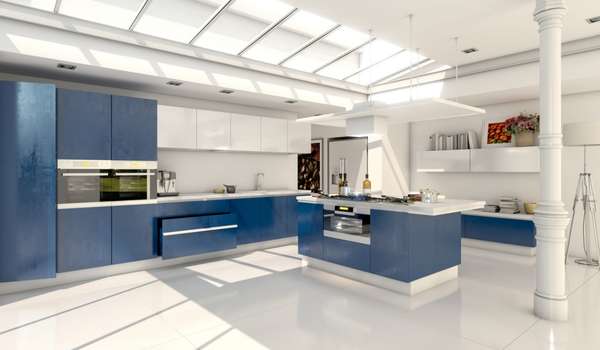
There are several types of materials that can be used to cover up your soffits and improve their appearance. Here are some of the most popular materials that homeowners use for this purpose:
Firstly, wood panels can be an excellent choice if you’re looking for something sturdy and durable. Wood panels come in different styles and finishes, Including natural wood grain or painted finishes. They also add warmth and texture to any space they are installed in.
Secondly, vinyl is another material that is commonly used as a covering option because it’s easy to clean and maintain. It also comes in different styles and colors, Which makes it ideal for matching your kitchen’s color scheme.
3. Selecting Color and Pattern

Selecting the right color and pattern for your kitchen’s soffits can be a daunting task. A soffit is an area in the upper part of your kitchen that covers up ductwork, pipes or wiring. It can create a barrier to aesthetics and cause some eyesores in your space. However, With the right color and pattern selection, You can transform this area into a stylish feature that blends seamlessly with your overall décor.
One way to disguise kitchen soffits is by painting them the same color as your walls. This creates a continuous look and makes the ceiling appear higher than it actually is. Alternatively, You could paint the soffit in a contrasting shade to make it pop against your walls. If you want to add more depth to your space, Go for patterns such as stripes or geometric shapes that elongate the appearance of the space while making it more visually interesting.
4. Applying the Covering

Soffits are often built to conceal unsightly pipes or ducts, but they can also be used to create architectural interest. Unfortunately, soffits are rarely attractive and can make a kitchen feel cramped and outdated. However, there is a solution: applying the covering.
The first step in disguising your kitchen soffit is to determine what type of material you want to use for the covering. One option is to install drywall over the existing structure, Which gives you a blank canvas for painting or finishing as desired. Another option is to cover the soffit with wood paneling or beadboard for added texture and warmth. Whichever material you choose, It’s important to ensure that it’s properly secured and adhered to the existing structure.
5. Finishing Touches
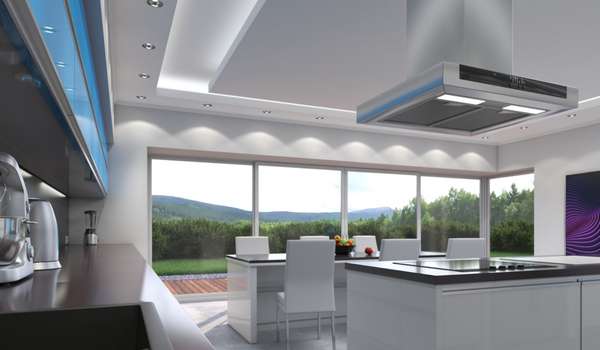
Adding finishing touches to your home is an essential part of creating a cozy and welcoming environment. However, There are times when certain design elements can be challenging to work around. One such element is the kitchen soffits. Soffits are box-like structures that house ductwork, wiring or pipes, and they’re often found in kitchens with high ceilings.
One of the easiest ways to hide a soffit is by installing crown molding on top of your cabinetry. This will create a seamless transition from the cabinets to the ceiling and give your kitchen a polished look. Alternatively, If you prefer a more rustic feel, consider adding wooden beams or planks over the top of your cabinets for some added texture.
6. Measurement: Estimate Space
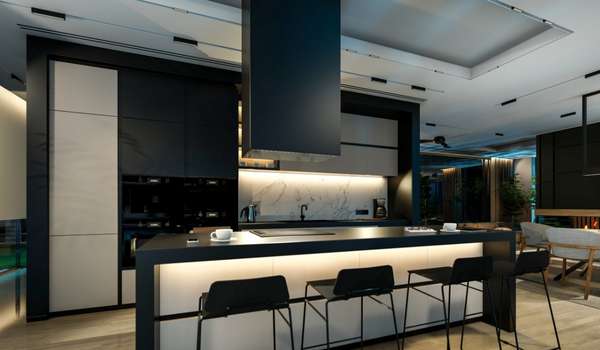
Disguising a kitchen soffit can be a challenging task. However, With careful planning and creative thinking, It is possible to transform this typically unattractive feature into an eye-catching design element that adds character and style to your kitchen. The first step is to estimate the space you are working with.
Start by measuring the length and width of the soffits. This will help you determine how much material you need for the project. Once you have a good idea of the dimensions, consider what type of material would work best for your design scheme. For example, If you want to create a rustic or industrial look, reclaimed wood panels might be ideal. If you prefer a more modern aesthetic, sleek metal tiles could be just what you need.
Another strategy for disguising a kitchen soffit is to use paint or wallpaper in interesting ways.
7. Materials: Selecting the Right Pieces

A kitchen soffit is a necessary feature in many homes, but it can often be an eyesore. Fortunately, With the right pieces and a little creativity, You can easily disguise soffits and turn it into a stylish focal point of your kitchen. Here are some tips for selecting the right pieces to help you accomplish this.
Firstly, consider the style of your kitchen when choosing pieces to disguise your soffits. If your kitchen has a modern aesthetic, opt for sleek and minimalistic pieces that won’t overwhelm the space. On the other hand, If your kitchen has a more traditional feel, look for decorative elements such as crown molding or ornate corbels.
Another thing to keep in mind is color. To make your soffits blend seamlessly into their surroundings, Choose pieces that match or complement the existing color scheme of your kitchen.
8. Design Tips: Visualizing the Look

When designing your kitchen, One of the things that can be a challenge is dealing with a soffit. A soffit is an architectural feature that runs along the top of your cabinets and can be used to hide ductwork or wiring. However, It can also be an eyesore if not incorporated properly into your design scheme.
One way to disguise kitchen soffits is by painting them the same color as your ceiling. This creates a seamless look and makes the soffits appear as though it’s simply an extension of your ceiling rather than an awkward protrusion above your cabinets.
Another option for disguising a soffit is by installing crown molding around it. This gives it more definition and makes it appear intentional rather than just something that was tacked on after construction.
9. Lighting Solutions: Brightening the Room

Brightening up a room can be a daunting task, especially if you have unsightly soffits that need disguising. It’s important to think creatively and find ways to make the space look more appealing without spending a lot of money. One way to achieve this is by adding colorful tiles or wallpaper under the soffits. This will draw the eye away from the unattractive feature and instead focus on the beautiful design element.
Another option is to install crown molding around the soffits area. This simple addition can give your kitchen an elegant touch while also hiding any flaws in the ceiling structure above. You can paint or stain it in any color that complements your existing decor, creating an instant focal point in your room.
10. Methods of Covering: Hanging and Attaching

Hanging and attaching items to kitchen soffits is an excellent way to disguise unsightly pipes, ducts, Or wires while adding visual interest to the space. With the right technique and tools, You can create a custom look that perfectly complements your kitchen’s design.
The first step in this process is to determine what you want to hang from your soffits. Do you want to install pendant lights for a dramatic effect? Or do you prefer open shelves or cabinets for extra storage? Once you have decided on your desired outcome, measure the length and width of your soffit accurately. This will help ensure that your hanging elements fit correctly.
Next, select the appropriate hardware for hanging or attaching items to the soffits. For pendant lights, Choose sturdy ceiling hooks rated for the weight of your fixture.
11. DIY Projects: Getting Creative

DIY projects are a great way to save money, express creativity and add personalized touches to your home decor. With so many ideas available online and in stores, There is no limit to what you can accomplish on your own. One trending DIY project that has caught the attention of many homeowners is disguising a soffit.
A kitchen soffit refers to the boxed-in area above cabinets or around ductwork that can be an eyesore for some homeowners. However, This space can be creatively disguised with various materials such as wood paneling, wallpaper or even tiles. Another approach is to paint it the same color as the ceiling for a seamless look.
When considering this DIY project, Start by measuring the length and width of the soffit and making note of any obstacles that may require special attention during installation.
16. Choosing Covering Materials
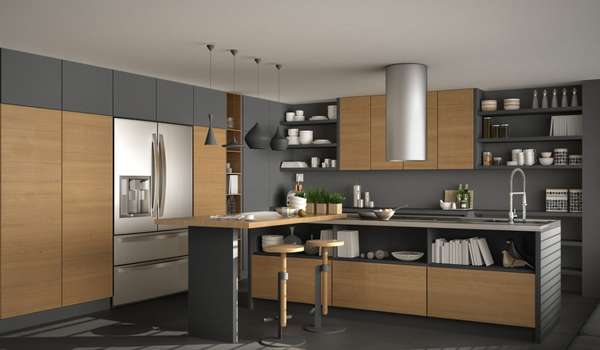
Choosing covering materials to disguise kitchen soffits can be a daunting task, But with the right guidance, It’s easy to transform an unsightly eye-sore into a beautiful design element. The first step is to determine the look you want to achieve. Do you want a polished and contemporary feel or something more rustic? Next, consider the function of your soffit is it purely decorative or does it have any practical use such as hiding plumbing or electrical work?
Once you’ve determined the purpose and desired aesthetic of your soffits, It’s time to choose the perfect covering material. There are many options available on the market including wood paneling, drywall, metal tiles, and wallpaper. Wood paneling offers a classic and warm look while drywall provides a clean canvas that can be painted or textured in any color or pattern.
13. Hiding Cables and Wires
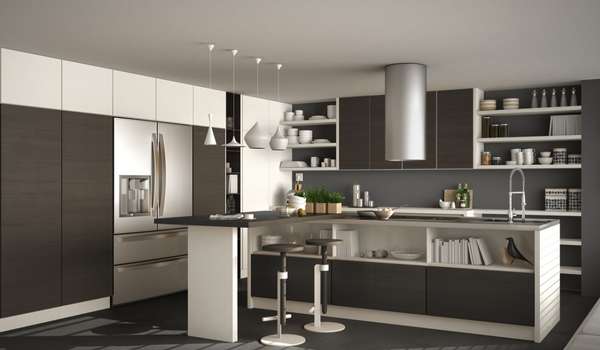
Hiding cables and wires is one of the most important aspects of home improvement. Cables and wires can be an eyesore, especially when they are not concealed properly. Disguising a kitchen soffit is one of the best ways to hide unsightly cables and wires in your kitchen. Here are a few tips on how you can disguise a kitchen soffit to hide cables and wires.
You could try painting the soffit the same color as your walls to blend it into the background. This will make it less noticeable and help it blend into the surrounding space. Secondly, You could install light fixtures or pendant lights that hang down from the ceiling to draw attention away from any unsightly wiring in your soffit.
14. Adding Decorative Elements

Adding decorative elements to your kitchen can be an exciting and fun way to give it a fresh new look. One area that often goes unnoticed when decorating the kitchen is the soffit, Which can be an eyesore if left untouched. However, With a little creativity and inspiration, You can easily turn this design challenge into a stunning focal point.
One of the most effective ways to disguise a soffit is by using wallpaper or paint. These are easy DIY projects that can add instant visual interest and depth to your space. Choose patterns or colors that complement your existing decor, Or go bold with a statement print that speaks to your personal style.
Another clever way to hide a kitchen soffit is by adding floating shelves or cabinetry. This not only provides additional storage space but also helps break up the monotony of an otherwise flat surface.
15. Incorporating Storage Solutions
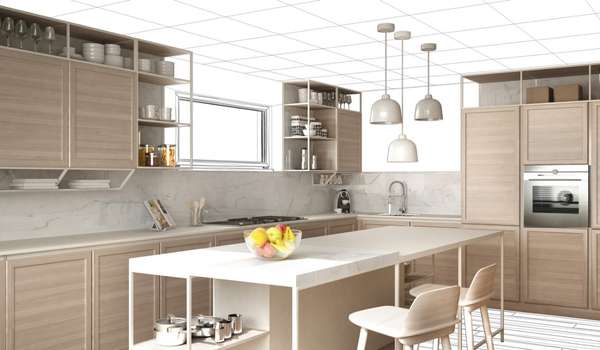
Incorporating storage solutions is an excellent way to make the most of your living space while keeping it organized and clutter-free. One area of the home that often goes overlooked when it comes to storage is the kitchen soffit. A soffit is an area between the top of your cabinets and ceiling, Which can be awkwardly shaped and difficult to access.
Fortunately, there are many creative ways you can disguise a kitchen soffit and turn it into a functional storage space. One option is to install custom cabinetry that fits snugly into the soffit area, providing additional shelves for storing dishes, glassware or pantry items. Alternatively, you could add open shelving to display decorative items such as plants or cookbooks.
Another idea is to use wire baskets or woven baskets to hold fruit or vegetables in an attractive manner that also frees up counter space.
16. Creative Ways to Disguise Soffits
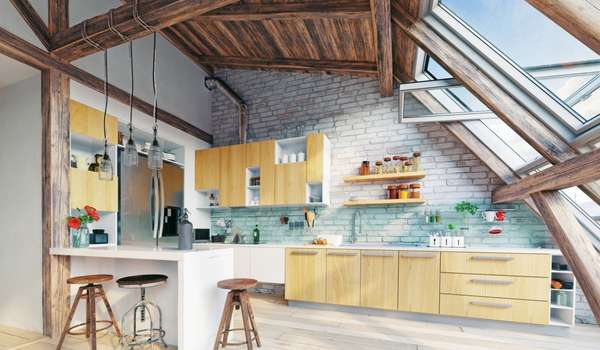
Disguising a kitchen soffit may seem like an impossible task, But with a little creativity and some DIY skills, You can turn this design obstacle into an opportunity. Soffits are often installed to hide ductwork or electrical wires, But they can be unsightly and disrupt the flow of your kitchen’s aesthetic. Fortunately, there are plenty of ways to make them blend in seamlessly with your décor.
One way to disguise the kitchens soffit is by installing cabinets or shelving units that align with the existing cabinetry. This creates a cohesive look that makes the soffit appear as if it was always intended to be there. Another option is to use wallpaper or paint to match the color of the surrounding walls. This technique helps camouflage the soffit while adding visual interest and depth.
What is the typical dimension of the kitchen soffit?
The typical dimension of a kitchen soffit will vary depending on the size and layout of the kitchens. Generally speaking, the height of a kitchen soffit is between 10 and 15 inches. The width can range from 3 to 6 feet, depending on the size of the kitchens. The soffit may be wider than 6 feet in larger kitchens to accommodate additional cabinetry or appliances.
When installing a kitchen soffit, It’s important to measure carefully and make sure that all measurements are accurate. This will ensure that your cabinets fit properly and look aesthetically pleasing in your space. Additionally, You’ll want to make sure that there is enough space for any electrical wiring or plumbing pipes that may need to run through the soffit area.
Overall, The dimensions of a kitchen soffit will depend on the size and layout of your kitchens.
Why It Pays to Disguise Your Kitchen Soffit
Soffits are a great way to add visual interest and texture to your kitchens. However, They can also be an eyesore if not properly disguised. Disguising your soffit is a great way to improve the overall look of the space while still making use of the functional purpose of the soffit.
One of the main benefits of disguising your soffit is that it can help create a more cohesive design in the room. By camouflaging the soffit, You can make it blend in with the rest of the decor and create a unified look throughout your kitchens. This will help give your kitchens an overall polished and finished appearance.
Another benefit of disguising your soffit kitchen cabinets is that it can provide extra storage space for items such as pots and pans or other cooking supplies. By adding shelves or drawers to your soffit, You can easily store items out of sight but still within easy reach when needed.
The Final Thought
Disguising kitchen soffits can be a great way to update the look of your kitchen without a complete remodel. Whether you opt for simple paint, wallpaper, wood paneling or even fabric treatments, This is an affordable and easily doable project that anyone can tackle. Not only will it help detract from any unwanted kitchen elements, But it can also give you the opportunity to inject some personality into your cooking space as well.





